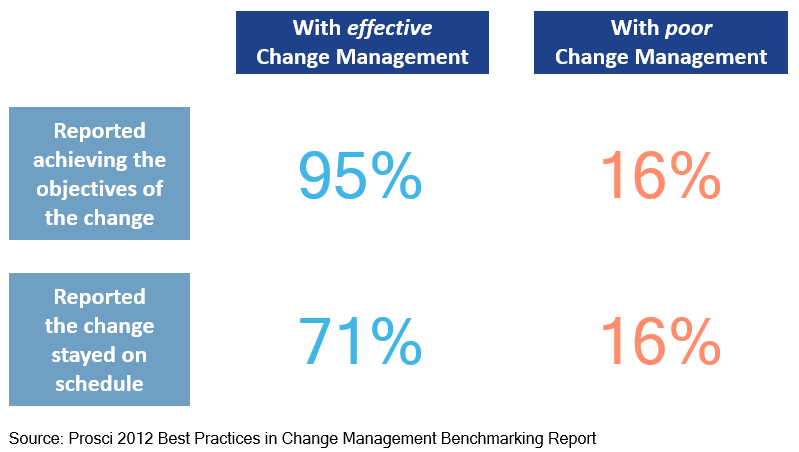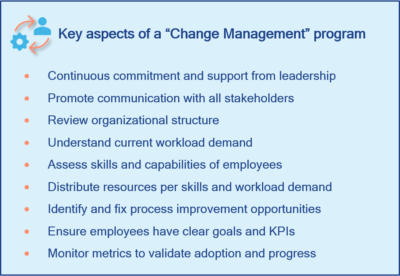Any coach or manager will tell you, creating a team is always a challenging undertaking. In professional sports, teams are formed and changed by signing free agents, player trades with other teams, and drafting college grads. In some cases, those players that become part of the team create a quick bond and chemistry with the team’s culture. In other cases, even if they are superstar players, they fail to fit in, and the team fails to reach its full potential. This challenge resonates with leaders across all industries. In the private sector, teams are sometimes transformed by mergers and acquisitions (M&A), reorganizations, and new processes or system implementations. In government agencies, teams are constantly being formed and reformed based on political appointees, which tend to change every 4 years and with agency consolidations, reorganizations, incentivized retirements, and divestitures. The challenge across all team integrations is constant: How do the coach and the organization make the incoming team players fit in with the culture and begin to reach their full potential faster?
In Puerto Rico’s government organization landscape, this challenge is very relevant with recent developments in agency reorganizations and Puerto Rico’s Electric and Power Administration’s (PREPA) recent transition from being a public corporation to being operated and maintained by a private company. In PREPA’s case, it is estimated that around 3,000 employees are being relocated to multiple agencies across the government. The speed of immersion of PREPA employees into their new employing agencies’ operation and culture will drive the success of this transformation. The risk is that a group of employees falls into areas where their work might not be needed, not valued, and eventually become displaced completely.
What are some important considerations and opportunities to make this transition a positive one for both the coach and the team? How can a “Change Management” program make an impact?
Embracing unexpected and imposed changes can represent an opportunity. Within the context of governmental agencies’ integration, this could mean, for example, the opportunity for Agency directors to review the organizational structure and workload, and to assess the capabilities of the employees within their teams. From here, investing time evaluating the right strategic allocation of these resources based on where they are needed within the agency, as well as creating a story of change that incorporates the reason why a transformation is happening in the first place, are key aspects of a “Change Management” program. For instance, most M&A integrations develop this story of change by pointing out the rationale and value created from the combination of both companies. For example, if Company A brings a strong sales team and a sophisticated product portfolio, and Company B has a world-class Customer Relationship Management (CRM) system, the combination of both is foreseen as a winning combination. The challenge for government agencies is creating a compelling vision of the future that can resonate throughout the organization, where the strengths and skills of incoming employees are highlighted.
Integrations can also serve as a catalyst for strategic vision changes and evolving the current organizational culture. The strategic vision of an organization can be re-evaluated after acquisition for multiple reasons. Some of the reasons could be that the new organization will serve more clients or will integrate more services and therefore, the mission and corresponding vision must change, or even further, that the new size of revenues, sales or budget of merged organizations will now allow it to become a market share leader after an acquisition or integration. Culturally speaking, organizations can see integration as an opportunity to become more customer-centric, or more casual, more agile, less hierarchical, etc. For instance, an organization that sees integration as an opportunity to double down as a top employer in a market, or to address current cultural gaps, or even to drastically change some of their cultural drivers to align them to a new vision, and therefore, making strong efforts to drive cultural changes that make employees feel more valued and involved. For example, these efforts can include refreshing the set of values and principles within the workplace, improving the recognition system, or providing more opportunities for training, career mobility, among other non-monetary incentives
For agency managers, the challenge is more present in everyday work activities. In most cases, integrating teams represents managing significant differences in skill sets and managing through differences in the compensation of employees performing similar work. This last topic, compensation, will require a strategy to harmonize these differences and be able to answer very tough questions. Managers should continue to be spokespersons of the agency’s story of change, the revised strategy, and new cultural norms. One of the main concerns of employees coming into a new work environment is the ability to contribute significantly. Employees can become easily frustrated if they are not seen as valuable within the team. Managers should make sure that these employees are onboarded correctly, feel welcomed by their new coworkers, and that they are able to build connections with the new team and add value to the department by having the right goals and KPIs, as well as enough tools and resources to do so.
Managers can potentially see integration as an opportunity to re-organize their department office according to their new headcount and incoming employees’ skills, improve outdated processes while reviewing plans, objectives, and metrics. In PREPA employees’ case, since they are not carrying additional workload, they can add bandwidth to a department that is overworked or that is not meeting the agency’s target results.
For Human Resource departments, integration is an opportunity to develop additional strategic capabilities and play beyond a traditional “operational” role, by leading or supporting a change process and by adding value as advisors or “business partners” to the leaders. Agency directors carry a lot of responsibility in making sure that throughout the organization, there is a collaboration between managers and HR to onboard new employees and train them accordingly.
For incumbent agency employees, leaders sometimes forget to consider that they will also experience a period of change, adoption, and disruption within their department. Managing change for them starts with the overall change story and should trickle down through their managers and supervisors. To promote a smoother transition, existing employees must be included in the process; they should know and understand the impending changes so that they can contribute and act upon the incoming employee onboarding process.
For most incoming employees, the change is major, overnight, and against their preferred outcome, as they are forcefully transferred to another agency. Change is hard as it is, making the change occur faster can reduce their change curve experience and will have a significant impact in making the integration more successful. This means that the common change curve can be accelerated depending on the agency’s effort and dedication to make the integration a positive one. On one hand, the agency should make sure that communication is solid and very frequent, on the other, this communication should be both ways. Implementing employee sentiment and feedback surveys to take the pulse of the organization along the process is always valuable.
So, beyond the logistics and obvious changes that these kinds of integrations and/or disintegrations can cause, there is a pressing challenge for all the stakeholders involved in managing the emotional side of change. A challenge that when poorly acknowledged and faced, cannot just make things more difficult, but also more costly. For this reason, companies that engage in transformations regularly tend to incorporate a Change Management strategy to tackle this challenge. According to research[1], more than 80% of change efforts fail due to a lack of an appropriate change management approach.

There are many methodologies to design and implement successful change management efforts within a transitioning organization, models like ADKAR®, Kotter’s, or McKinsey 8S. However, effective change management is much more than a robust communication and stakeholder plan, tools, and methodologies – these are important, but not sufficient. At the core of any successful organizational change, the effort is effective to change leadership. This is what the “Coach” will bring to the table when the team needs more than an “inspiring speech”; when there is a need to manage the human side of change, which are those subtle, but crucial aspects, that impact performance and that could make the difference between losing or winning a championship. Change leadership takes courage and skill. It addresses the beliefs, behaviors, values, and resources needed to work as a team more effectively and ensures a shorter and less steep change curve for all the stakeholders involved.
On which side of the change management statistics do you want your organization to be?

Sources and Footnotes
[1]Prosci Inc.
Disclaimer
Accuracy and Currency of Information: Information throughout this “Insight” is obtained from sources which we believe are reliable, but we do not warrant or guarantee the timeliness or accuracy of this information. While the information is considered to be true and correct at the date of publication, changes in circumstances after the time of publication may impact the accuracy of the information. The information may change without notice and V2A is not in any way liable for the accuracy of any information printed and stored, or in any way interpreted and used by a user.